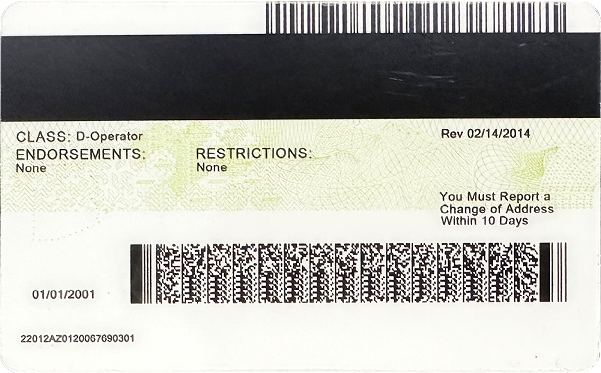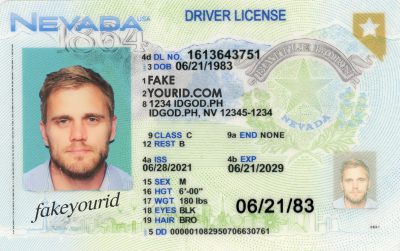In the modern digital age of e – commerce, various verification processes are in place to ensure the security and authenticity of transactions. One such important verification is that of a buyer’s driver’s license. There are several reasons why e – commerce platforms may need to verify a buyer’s driver’s license. For instance, in cases where age – restricted products are being sold, such as alcohol or tobacco, verifying the buyer’s age through their driver’s license is crucial to comply with legal regulations.
Types of Information on a Driver’s License for Verification
A driver’s license contains a wealth of information that can be used for verification purposes. The most basic information includes the full name of the license holder. E – commerce platforms will match this name with the name provided during the registration or checkout process. For example, if a buyer registers as “John Doe” and the name on the driver’s license is “Jonathan Doe”, there may be a need for further clarification or additional verification steps.
The date of birth on the driver’s license is another key piece of information. It is used to determine if the buyer is of legal age to purchase certain products. E – commerce platforms have automated systems that can calculate the age based on the date of birth provided on the license and compare it with the age requirements for the products in question. For example, if the legal drinking age is 21, the system will check if the buyer’s date of birth makes them at least 21 years old.

The license number is also a unique identifier. It helps in cross – referencing with relevant government databases (if the platform has access to such databases) to ensure that the license is valid and has not been reported as lost, stolen, or revoked. Some e – commerce platforms may also use the address on the driver’s license for additional identity verification, especially if it matches the billing or shipping address provided by the buyer.
Manual Verification Process
In some cases, e – commerce platforms may opt for manual verification of the driver’s license. This usually occurs when the automated systems flag an issue or when the platform wants a more in – depth check. When a buyer uploads a copy of their driver’s license (which is often required in the case of age – restricted product purchases), a human operator will review the document. The operator will start by checking the overall appearance of the license. They will look for security features such as holograms, watermarks, and microprinting, which are present on most modern driver’s licenses. If these features are missing or appear to be altered, it could be a sign of a fake license.

The operator will then carefully compare the information on the license with the details provided by the buyer in the e – commerce system. They will ensure that the name, date of birth, and other details match exactly. If there are any discrepancies, such as a misspelling in the name or an inconsistent date of birth format, the operator may contact the buyer for clarification. For example, if the name on the license is “Smith, John” but the e – commerce system has it as “John Smith”, the operator may ask the buyer to confirm which is the correct format.
Manual verification also involves checking for any signs of tampering on the license. This includes looking for signs of涂改, such as erased or rewritten text, or any unusual marks on the surface of the license. If any such signs are detected, the license may be considered invalid, and the buyer may be asked to provide a new or additional form of identification.
Automated Verification Process
Automated verification is a more common and efficient method used by e – commerce platforms. Optical Character Recognition (OCR) technology is often employed. OCR can scan the text on the driver’s license and convert it into machine – readable text. This allows the e – commerce platform’s system to quickly extract key information such as the name, date of birth, and license number. For example, an OCR – enabled system can scan a digital image of a driver’s license and within seconds, extract all the relevant details.
Once the information is extracted, the system can perform several checks. It can compare the extracted name with the name in the platform’s customer database. If there is a match, it is a positive sign. The system will also check the date of birth against the age requirements for the products being purchased. If the buyer meets the age criteria, the verification process may move forward. Additionally, the license number can be cross – referenced with a database (if available) to confirm its validity. Some e – commerce platforms may also use machine learning algorithms to analyze the overall appearance of the license, such as its color, font, and layout, to detect any signs of forgery.
Automated verification also allows for quick processing of a large number of transactions. For a busy e – commerce platform that processes thousands of orders daily, manual verification for every driver’s license would be time – consuming and resource – intensive. Automated systems can handle a high volume of verifications in a short period, ensuring a seamless shopping experience for legitimate buyers while still maintaining security.
Integration with Government Databases
Some e – commerce platforms may have the ability to integrate with government databases for more accurate and reliable driver’s license verification. By connecting to the relevant state or national motor vehicle departments’ databases, the platform can directly verify the authenticity of the license number. For example, if a buyer’s license number is entered into the e – commerce system, the system can send a query to the government database to check if the number is valid and associated with the correct person.
This integration also allows for real – time verification. Instead of relying solely on the appearance and information on the driver’s license copy provided by the buyer, the platform can get up – to – date information from the official source. For instance, if a license has been revoked due to a traffic violation, the government database will have this information, and the e – commerce platform can prevent the buyer from making age – restricted purchases using that license. However, such integration often requires strict security measures and compliance with privacy laws to ensure the protection of buyers’ personal information.
Common Problems and Solutions
-
Problem: Blurry or Incomplete License Images
Sometimes, buyers may upload blurry or incomplete images of their driver’s licenses. This can make it difficult for both manual and automated verification processes. For manual verification, an operator may not be able to clearly read the information, and for automated verification, OCR technology may not be able to accurately extract the text.
Solution: E – commerce platforms should provide clear instructions to buyers on how to take a proper photo or scan of their driver’s license. They can specify the required resolution, lighting conditions, and ensure that the entire license is visible in the image. Additionally, if an image is detected as blurry or incomplete during the verification process, the platform can send a notification to the buyer asking them to resubmit a better – quality image.
-
Problem: Discrepancies in Name Formats
As mentioned earlier, differences in name formats between the driver’s license and the e – commerce system can cause issues. For example, some people may use their full first name on the license but a nickname during registration on the e – commerce platform.
Solution: The e – commerce platform can have a mechanism to handle such discrepancies. It can prompt the buyer to confirm the correct name format and also consider using algorithms that can match similar names (e.g., “James” and “Jim”) with a certain degree of tolerance. The platform can also provide an option for the buyer to add an alias or alternative name during the registration process to avoid such issues in the future.
-
Problem: False Positives in Automated Verification
Automated verification systems may sometimes generate false positives. For example, due to variations in font styles or poor OCR performance, the system may incorrectly flag a valid license as invalid.
Solution: E – commerce platforms should continuously improve their automated verification algorithms. They can use machine learning to train the system on a wide range of driver’s license formats and variations. Additionally, in case of a false positive, the platform should have a manual review process in place where a human operator can take a closer look at the license and override the automated decision if necessary.
-
Problem: Privacy Concerns
Buyers may be concerned about sharing their driver’s license information with e – commerce platforms due to privacy reasons. They may worry about how their personal data will be stored and used.
Solution: E – commerce platforms need to be transparent about their data protection policies. They should clearly communicate to buyers how their driver’s license information will be stored (e.g., encrypted in secure servers), who will have access to it (only authorized personnel for verification purposes), and how long it will be retained. By reassuring buyers about the security and privacy of their data, the platform can build trust and encourage them to provide the necessary information for verification.
-
Problem: Inaccurate Government Database Information
In some cases, the information in government databases may be inaccurate or out – of – date. For example, a license may have been renewed, but the database has not been updated yet.
Solution: E – commerce platforms should have a contingency plan for such situations. They can request additional forms of identification from the buyer if the information in the government database does not match the license presented. They can also provide a feedback mechanism to the relevant government agencies to report inaccurate information so that the databases can be updated in a timely manner.
Fake ID Pricing
unit price: $109
| Order Quantity | Price Per Card |
|---|---|
| 2-3 | $89 |
| 4-9 | $69 |
| 10+ | $66 |



